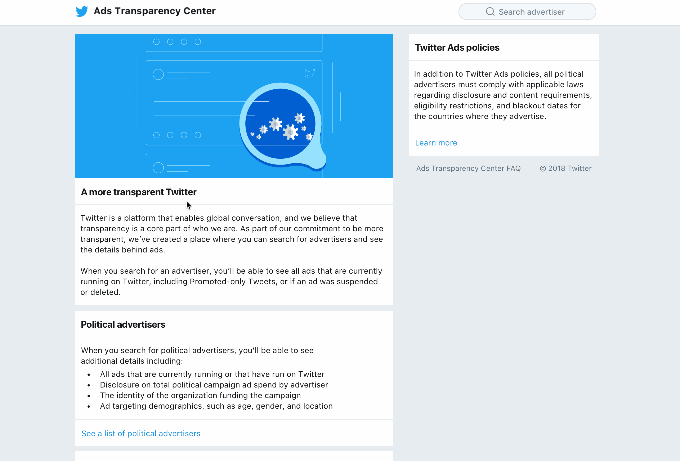Twitter continues to roll out new policies aimed at increasing transparency, particularly around political advertising.
Amidst ongoing concerns about Russian election interference and misinformation on social media, the company recently announced political ad guidelines and launched an Ads Transparency Center where you can find more information about advertisers.
Initially, however, Twitter’s stricter standards were limited to ads for U.S. federal election candidates and campaigns. Now it’s announced a policy around the broader category of “issue ads.”
In a blog post, Twitter’s vice president of trust and safety Del Harvey and its general manager of revenue product Bruce Falck said the policy affects two categories:
* Ads that refer to an election or a clearly identified candidate, or
* Ads that advocate for legislative issues of national importance
In both cases, advertisers will need to apply for certification, which involves verifying their identity and location in the United States. Like election ads, issue ads will be labeled as such in the Twitter timeline, and they’ll allow users to click through and learn more about the advertiser. They’ll also be included in the Ads Transparency center.

As examples of the kinds of issues that would be covered, Harvey and Falck cited “abortion, civil rights, climate change, guns, healthcare, immigration, national security, social security, taxes, and trade,” though they also said that list will likely evolve over time.
News organizations that want to run ads around their political coverage can apply for an exemption. (Since the definition of what is and isn’t a news organization can be blurry, there are specific criteria that they’d need to meet, like providing editorial staff information online and not being “dedicated to advocating on a single issue.”)
“We don’t believe that news organizations running ads on Twitter that report on these issues, rather than advocate for or against them, should be subject to this policy,” Harvey and Falck wrote.
Twitter says it will start enforcing the policy (which, to be clear, is currently U.S.-only) on September 30.
from TechCrunch https://ift.tt/2NyEQqa
via IFTTT
Comments
Post a Comment